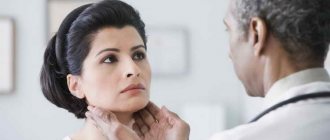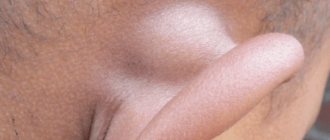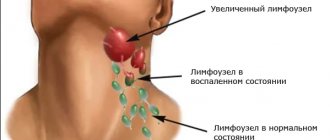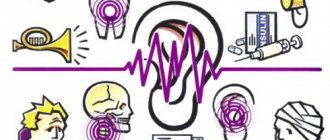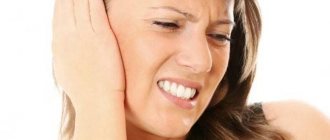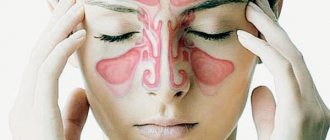The lymphatic system of the human body is considered one of the most complex. Lymph nodes are continuously in the process of producing microphages. It becomes a kind of barrier that protects a person from infections that enter the body naturally (for example, with diseases of the nasopharynx) or due to injuries to the skin.
If the human immune system fails to resist the development of pathogenic microflora, then a certain reaction is observed in the form of inflammation of the lymph nodes behind the ear. When a tumor forms in this area, it is quite easy to detect it by touch yourself. It is worth noting that an inflamed lesion can cause serious discomfort or not create any discomfort at all.
If we talk about what to do if the lymph node behind the ear is inflamed, then first of all it is necessary to determine the causes of the ailment. When there is a risk of infection spreading, such a condition can lead to quite serious consequences. In addition, you need to understand that lymph is responsible for the transfer of enzymes, many useful substances and the removal of bacteria. Therefore, problems with this zone need to be resolved as quickly as possible.
Why do the behind-the-ear lymph nodes become inflamed?
Let's start with the fact that the human body contains about 600 nodes of the lymphatic system, the size of each of them rarely exceeds 50 mm. Moreover, they can be of a wide variety of shapes (oval, circle, bean, etc.). Behind the ear, the lymph nodes run next to the vein. If a person is completely healthy, then these nodules cannot be felt by touch. If some compaction and inflammation are detected, serious problems may occur that require qualified assistance.
When experts note the reasons why the lymph node behind the ear in a child or adult is inflamed, they are most often identified against the background of the following conditions:
- Inflammatory diseases occurring in the ears. Most often, such ailments include otitis media.
- Development of inflammation in the human oropharynx. If an adult or child has an inflamed lymph node behind the ear, then there is a possibility that the patient is suffering from laryngitis, pharyngitis, sore throat or stomatitis. Pulpitis and even ordinary caries also lead to similar symptoms.
- Fungal infections that affect the scalp. As a rule, with such pathologies, a person suffers from severe itching and hair loss.
- Seasonal colds.
- Infectious diseases. These include rubella, chickenpox, and mumps.
- Purulent rashes that were caused by the activity of streptococci.
- Neuritis, if the doctor has diagnosed inflammatory processes affecting the peripheral nerves, which are located directly in the human ear.
As a rule, with such pathologies, the lymph nodes are enlarged, but do not hurt or suppurate. Usually, once the cause of the swelling is eliminated, the symptoms completely disappear. However, if a person experiences severe pain and notes that the lymph nodes are very hot, then it is highly likely that the patient is suffering from purulent processes.
Treatment
In case of occurrence of postauricular lymphadenitis, treatment has the following directions:
- identifying the sources of the inflammatory process and selecting appropriate treatment for the underlying disease;
- relief of an acute or chronic process in the lymph node itself.
Uncomplicated cases should be treated at home.
Treatment tactics for postauricular lymphadenitis will depend on the results of the diagnostic stage and the identified pathological processes.
The following groups of pharmaceuticals are used for treatment:
| Group of drugs | Purpose of application | List of drugs |
| Antibacterial drugs | Elimination of microbial contamination | System:
For local use:
in the form of eye and ear drops |
| Antiviral agents | Destruction of an infectious agent of a viral nature |
|
| Antifungal antibiotics | Therapy for fungal tissue infections |
|
| Histamine receptor blockers | Elimination of allergic reactions - swelling and redness |
|
| Symptomatic drugs (analgesics, antipyretics, antitussives, expectorants, mucolytics) | Used in the presence of appropriate symptoms to eliminate them and improve the patient’s condition | For pain relief:
Antitussives:
For a productive cough:
|
| Immunomodulatory and immunostimulating drugs and vitamin therapy | Increasing the activity of the immune system, strengthening the body’s own defenses, improving the patient’s condition |
|
| Antiseptic solutions for topical use | Fighting infection directly at the source |
|
The choice of medications is made taking into account the patient’s tolerability. And in the case of antibacterial and antifungal drugs, in addition, the sensitivity of the pathogen to a particular drug is important. Before receiving the results of tests on the susceptibility of microorganisms to antibiotics, broad-spectrum drugs are prescribed. Preference should be given to drugs that are protected from the effects of enzymes secreted by microorganisms.
Treatment regimens for some diseases accompanied by postauricular lymphadenitis
Inflammation of the lymph node itself is not an independent disease. This is a secondary condition caused by the primary infection.
Therefore, first of all, treatment is aimed at eliminating the primary focus as the cause of the pathological condition.
External and media otitis
The vast majority of cases of otitis externa have a bacterial etiology. Therefore, antimicrobial therapy is an integral part of treatment. In the case of uncomplicated external otitis, local treatment is highly effective, so prescribing systemic antibacterial therapy in this case is not advisable. For the treatment of uncomplicated external otitis, the following drugs are used in the form of ear drops:
- Dancil;
- Tsipromed;
- Combinil-Duo;
- Otipax;
- Otofa.
Prescribing systemic antibiotic therapy makes sense in the treatment of patients with post-radiation external otitis, patients with concomitant pathologies such as diabetes mellitus or who are in a state of immunosuppression, regardless of its etiology.
In addition to etiotropic therapy, the standard treatment of otitis externa includes adequate pain relief with non-steroidal anti-inflammatory drugs. These include:
- Paracetamol;
- Ibuprofen;
- Ketoprofen;
- Dexketoprofen.
Prescribing systemic antibiotic therapy makes sense in the treatment of patients with post-radiation external otitis, patients with concomitant pathologies such as diabetes mellitus or who are in a state of immunosuppression, regardless of its etiology.
In addition to etiotropic therapy, the standard treatment of otitis externa includes adequate pain relief with non-steroidal anti-inflammatory drugs. These include:
- Paracetamol;
- Ibuprofen;
- Ketoprofen;
- Dexketoprofen.
Regular sanitation of the external auditory canal is also necessary.
Therapy for otitis media involves:
- systematic sanitation of the nasal cavity using isotonic sodium chloride solution or sea water;
- the use of vasoconstrictors - decongestants: Oxyphrine;
- Xylometazoline;
- Galazolina;
- Naphazoline;
- Acetylcysteine;
Local and systemic medications are used to relieve pain.
Drug therapy regimens:
| Direction of therapy | A drug | Usage diagram |
| Pain relief with NSAIDs | Paracetamol | Single dose 10-15 mg/kg |
| Ibuprofen | Single dose 8-10 mg/kg | |
| Local treatment | Ear drops containing lidocaine: Otipax | 3-4 drops into the external auditory canal |
| Alcohol-containing ear drops | 3-4 drops into the external auditory canal |
For systemic treatment of acute otitis media, the drugs of choice are amoxicillin-based drugs, provided that the patient has not taken such drugs in the last 30 days. If the effect of treatment with amoxicillin is insufficient after three days, it is necessary to replace the drug of choice with a combination of amoxicillin with clavulanic acid or an antibacterial agent of the 3rd generation cephalosporin class (Cefixime, Pancef, Ceftibuten), which are protected from the effects of β-lactamases produced by pathogenic microorganisms.
Local and systemic medications are used to relieve pain.
Drug therapy regimens:
| Direction of therapy | A drug | Usage diagram |
| Pain relief with NSAIDs | Paracetamol | Single dose 10-15 mg/kg |
| Ibuprofen | Single dose 8-10 mg/kg | |
| Local treatment | Ear drops containing lidocaine: Otipax | 3-4 drops into the external auditory canal |
| Alcohol-containing ear drops | 3-4 drops into the external auditory canal |
For systemic treatment of acute otitis media, the drugs of choice are amoxicillin-based drugs, provided that the patient has not taken such drugs in the last 30 days. If the effect of treatment with amoxicillin is insufficient after three days, it is necessary to replace the drug of choice with a combination of amoxicillin with clavulanic acid or an antibacterial agent of the 3rd generation cephalosporin class (Cefixime, Pancef, Ceftibuten), which are protected from the effects of β-lactamases produced by pathogenic microorganisms.
Taking a combination of amoxicillin and clavulanate is recommended in oral form.
ARVI
Treatment of acute respiratory viral infections is carried out on an outpatient basis or in a hospital, depending on the severity of the patient’s condition. Patients suffering from a severe form of the disease or complications from it, or for epidemic reasons, are subject to hospitalization.
Treatment goals:
- stop the spread of the pathological process;
- prevent and stop the development of complications of the disease;
- prevent the development of residual effects;
- prevent the formation of recurrent and chronic disease.
The following medications are used to treat acute respiratory viral infection:
| Direction of therapy | Drugs |
| Antiviral agents | Umifenovir |
| Interferons | Interferon-α intranasal |
| Other immunomodulators |
|
| Nucleoside group drugs | Acyclovir |
| Nonsteroidal anti-inflammatory drugs |
|
| Antimycotics (if a fungal infection is attached) |
|
| Antibacterial drugs (if a microbial infection is attached) |
|
| Glucocorticosteroids (in case of severe and moderate course, accompanied by drug allergies or the development of infectious-toxic shock) |
|
| Adrenergic agonists |
|
Sinusitis
In severe and moderate forms of sinusitis, the use of systemic antibacterial therapy is recommended. The selection of drugs is carried out based on the suspected pathogen or their combination.
In the case of mild sinusitis, antibiotic therapy is prescribed only in cases where the upper respiratory tract infection is recurrent and the duration of clinical symptoms is more than 5 - 7 days. Antibacterial therapy is also indicated for patients with severe concomitant somatic pathologies, for example, diabetes, as well as patients in a state of immunodeficiency.
The main goal of treatment for acute sinusitis is complete eradication (destruction) of the infectious agent that provoked the disease. In this regard, when prescribing antibiotics, preference should be given to agents that have the fastest bactericidal effect. The criterion for the effectiveness of the therapy used is the dynamics of clinical symptoms. If there is no noticeable effect within three days, the drug should be replaced without waiting for the end of the course.
The drug of choice is Amoxicillin, administered orally in the following regimen: from 500 to 1000 mg twice a day.
Alternative drugs are:
| Name | Application diagram |
| Combinations of amoxicillin and clavulanate: Amoxiclav, Flemoclav |
|
| Amoxicillin in combination with sulbactam: Trifamox |
|
| Cefixime | 400 mg 1 time per day |
| Cefuroxime axetil | 250-500 mg 2 times a day |
In case of intolerance to β-lactam antibiotics, the following drugs are used:
| Name | Application diagram |
| Josamycin | 1000 mg 2 times a day |
| Clarithromycin | 250-500 mg 2 times a day |
| Levofloxacin | 500 mg 1 time per day |
| Moxifloxacin | 400 mg 1 time per day |
| Gemifloxacin | 320 mg 1 time per day |
| Azithromycin | 500 mg 1 time per day |
If initial therapy is ineffective or if the infectious agent is resistant to it, a combination of amoxicillin and clavulanate is used orally at 625 mg 3 times a day or 1000 mg 2 times a day.
Alternative means are:
- Levofloxacin;
- Gemifloxacin;
- Moxifloxacin;
- Cefditoren
in individually selected doses.
Alternative drugs are:
| Name | Application diagram |
| Combinations of amoxicillin and clavulanate: Amoxiclav, Flemoclav |
|
| Amoxicillin in combination with sulbactam: Trifamox |
|
| Cefixime | 400 mg 1 time per day |
| Cefuroxime axetil | 250-500 mg 2 times a day |
In case of intolerance to β-lactam antibiotics, the following drugs are used:
| Name | Application diagram |
| Josamycin | 1000 mg 2 times a day |
| Clarithromycin | 250-500 mg 2 times a day |
| Levofloxacin | 500 mg 1 time per day |
| Moxifloxacin | 400 mg 1 time per day |
| Gemifloxacin | 320 mg 1 time per day |
| Azithromycin | 500 mg 1 time per day |
If initial therapy is ineffective or if the infectious agent is resistant to it, a combination of amoxicillin and clavulanate is used orally at 625 mg 3 times a day or 1000 mg 2 times a day.
Alternative means are:
- Levofloxacin;
- Gemifloxacin;
- Moxifloxacin;
- Cefditoren
in individually selected doses.
The recommended duration of antibiotic therapy is from 5 to 7 days for uncomplicated cases and up to two weeks for complicated cases.
The antibacterial drug must be selected taking into account contraindications and the patient’s tolerability of the medications. If the infectious agent is resistant to initial therapy, it is recommended to analyze the sensitivity of the pathogen to antibiotics and select therapy based on the results of the study.
In addition to antibacterial therapy, it is recommended to prescribe elimination irrigation therapy, which involves washing the nasal cavity with isotonic sodium chloride solution in order to evacuate the infectious agent.
The use of local anticongestants improves nasal breathing and aeration of the paranasal sinuses.
The use of the following medicinal substances is recommended:
| Mechanism of action | Drug names |
| α1-adrenergic agonist | Phenylephrine |
| α2-adrenergic agonists |
|
| α1 + α2- adrenergic agonists |
|
| α + β- adrenergic agonist | Adrenaline hydrochloride |
Mastoiditis
Conservative treatment of mastoiditis involves early initiation of systemic antibiotic use. Antibiotic therapy should be started from the very beginning of the disease, without waiting for a bacteriogram. As the results of bacteriological testing for the sensitivity of the infectious agent to antibiotics are ready, adjustments to antimicrobial therapy may be necessary.
Antibacterial drugs for this disease are administered parenterally at regular intervals. Cancellation of antimicrobial treatment does not occur until the patient’s complete biological recovery, that is, complete eradication of the pathogen that caused the disease.
In order to cover the widest possible list of suspected pathogens, it is advisable to prescribe at least two antibacterial drugs during initial therapy.
The drugs of choice are β-lactam antibacterial drugs, which are administered into the body slowly intravenously or in the form of drip infusions.
Good results show:
- combinations of amoxicillin and clavulanate;
- combination of ticarcillin and clavulanate;
- Cefuroxime;
- Cefotaxime;
- Ceftriaxone;
- Cefoperazone.
Severe mastoiditis is associated with dehydration and severe intoxication syndrome. To correct these pathological conditions, isotonic sodium chloride solution is used. In order to prevent thrombosis of the sigmoid sinus, anticoagulants are included as a component in the therapeutic regimen. Of the direct ones, sodium heparin and Fraxiparin are most often used, and of indirect ones - Phenindione.
Mumps
The disease is more common in children than in adults.
When treating mumps (mumps), several problems must be solved simultaneously:
- elimination of intoxication syndrome;
- preventing the spread of the infectious process (the surrounding tissues cannot be allowed to become inflamed);
- prevention of complications of the disease from other systems and organs;
- prevention of the development of residual effects of the disease.
The first priority is:
- pathogen eradication;
- detoxification;
- desensitization of the body in order to improve the patient's condition.
Mild cases of the disease are treated on an outpatient basis.
Drug therapy involves the use of the following groups of drugs:
| Group | Drugs |
| Means of etiotropic therapy | Antibacterial drugs:
|
| Pathogenetic therapy |
|
| Symptomatic treatment |
|
| Immunocorrection |
|
Brucellosis
Treatment of patients with suspected brucellosis, as well as with an established diagnosis, is carried out in a hospital setting.
This is necessary to ensure round-the-clock monitoring of the patient.
Rubella
Simultaneously with the inflammation of the lymph nodes behind the ear during rubella, the lymph nodes located in the occipital region also enlarge.
In the case of an uncomplicated course of the disease, symptomatic therapy is prescribed on an outpatient basis, child care, and general strengthening measures as the symptoms of rubella fade. Taking a complex of vitamins is indicated.
In the case of the development of rubella encephalitis, the use of pathogenetic therapy is indicated, which involves the use of anti-inflammatory, vasoactive, neuroprotective and antioxidant drugs.
Etiotropic therapy consists of the use of interferon drugs, which are prescribed if there are signs of damage to the central nervous system.
Registration of a bacterial infection is an indication for the prescription of antibiotics.
With the development of rubella arthritis, the main role in treatment is played by the use of non-steroidal anti-inflammatory drugs - both in systemic forms and in the form of topical agents.
Allergic reactions
Allergic reactions that do not threaten the patient’s life, are not associated with swelling of the upper respiratory tract, do not impede breathing, or cause suffocation, can be treated on an outpatient basis. To relieve allergic conditions, h1-histamine receptor blockers are used. The choice of drug is determined by the patient’s age, the severity of the symptoms of the disease, and the patient’s tolerance to drugs from the antihistamine group.
In case of severe symptoms, accompanied by urticaria, itching and burning, increased nervousness, it is advisable to use 1st generation antihistamines as initial therapy:
- Diphenhydramine;
- Suprastin;
- Tavegil.
The advantage of these drugs is an additional sedative effect, as well as the possibility of parenteral administration if necessary.
The downside is the short duration of action, as a result of which the frequency of use is 2-3 times a day.
Antihistamines of the latest generations do not have a pronounced sedative effect and can be used by patients of working age without fear for the ability to concentrate and speed of psychomotor reactions.
Another advantage is the long-lasting effect of such medications - 12-24 hours. In some cases, a single dose per day is sufficient.
In order to avoid contact with the allergen in case of food and drug allergies, the use of enterosorbents is indicated, which include:
- Polysorb;
- Smecta;
- Enterosgel.
Infected soft tissue injuries or skin rashes
In these cases, antiseptic solutions are used to disinfect wounds, and, if necessary, aseptic dressings.
To treat infected elements of a skin rash, aseptic solutions and antibacterial ointments are used. At the same time, the problem of identifying the cause of the rash, diagnosing and treating a skin disease or allergic reaction should be solved.
Immunodeficiency
The choice of treatment in this situation depends on the cause of the pathological condition. In the case of the viral nature of immunodeficiency (HIV), antiviral agents are used that block the replication of RNA viruses.
In case of the infectious nature of immunodeficiency, immunomodulatory agents, interferon inducers, vitamin therapy, and general strengthening measures are prescribed.
If there is pus
In such situations we are talking about lymphadenitis. In this case, patients note that they not only have an enlarged lymph node behind the ear, but also a noticeable increase in body temperature (up to 38 degrees or more). This leads to poor appetite, severe headaches and general weakness. In more advanced cases, noticeable ulcers appear around the lymph nodes.
As a rule, such symptoms are observed when the body is exposed to opportunistic bacteria and even some types of intracellular parasites. Lymphadenitis develops due to streptococci, staphylococci, chlamydia, E. coli, etc.
If a child has an inflamed lymph node behind the ear and at the same time has a fever, then you should immediately contact a specialist. Such illnesses at a young age can lead to quite serious complications in adulthood, so you shouldn’t take the risk.
How to treat a lymph node behind the ear
The treatment regimen for lymphadenitis may differ slightly, depending on the age of the patient and the severity of the disease. If the inflammatory process occurs without suppuration, the patient is prescribed the following medications:
- Antibacterial drugs from the group of cephalosporins or penicillins. They eliminate the infection, due to which the inflammation quickly passes. Sulfonamide drugs may also be prescribed.
- Antiallergic drugs. Thanks to such drugs, the degree of swelling and inflammation of the lymph node decreases.
- If the lymph node is too painful, the patient is prescribed painkillers.
- Immunomodulators and vitamin complexes increase the body's defenses.
- Vitamin C. Increases the body's resistance to various infections and promotes rapid recovery.
To quickly cure lymphadenitis, the doctor may prescribe various physiotherapy procedures. Usually, for inflammation of the lymph nodes, electrophoresis and UHF are prescribed.
If inflammation of the lymph nodes behind the ear is accompanied by a purulent process, then surgical intervention is necessary. In this case, the surgeon cuts the lymph node, cleans it of purulent masses, rinses it with an antiseptic solution, and then stitches it up. A drain is inserted into the incision site for several days to remove any remaining pus and effusion.
Surgical treatment is also used if conservative treatment for inflammation of the lymph nodes does not help for a long time.
Symptoms of lymphadenitis
At a more advanced stage of the disease, the patient additionally begins to complain of:
- frequent headaches and a sharp deterioration in general health;
- very high fever;
- problems with sleep and appetite;
- stuffiness and pain in the ear.
This pathology is difficult to confuse with other ailments. Self-medication should only be done after visiting a doctor and only if there is no pus coming out of the ear. Otherwise, there is a risk of the situation leading to an abscess. If the inflammation reaches the membrane of the brain, then there is a danger of the most tragic outcome. In addition, the blood flow very quickly begins to spread the infection throughout the body. Against this background, the functionality of the most important systems or organs may be disrupted.
Sometimes an inflamed lymph node behind the ear becomes a consequence of respiratory diseases, otitis media or flu. In this case, it is necessary to cure the primary ailment. After this, the lymph nodes will return to normal on their own. In some cases, you can get by with traditional medicine recipes. However, if we are talking about a more advanced stage, in which pus forms, then most likely the doctor will prescribe a course of antibiotics. Additionally, experts often recommend taking general restorative medications and anti-inflammatory drugs.
It is worth noting that if a child has an inflamed lymph node behind the ear, then there is no need to panic too much. Such ailments are most often diagnosed in children. The main thing is to know how to properly treat this pathology.
Causes and symptoms of inflammation
The parotid lymph nodes quickly respond to negative changes in the body. In their normal state they are soft and practically unnoticeable. But during the inflammatory process they become hard and dense, they are easy to feel.
The following reasons for the development of lymphadenopathy (enlargement of nodes) in the ear area can be identified:
- In most cases, inflammation of the lymph nodes behind the ears is associated with viral and bacterial infections that develop near the organ. Examples of ear diseases include otitis media, eustachitis, and inflammation of the ear nerve. The throat and mouth are close, so diseases such as pharyngitis, tonsillitis, and inflammation of the salivary glands also lead to an increase in the size of the node. Respiratory viral infections and inflammation of the upper respiratory tract can also be the cause. In this case, several lymph nodes often become inflamed and enlarged at once. A sore throat, headache, runny nose, cough, general weakness appear, and body temperature rises.
- Often the development of rubella and mumps leads to such a pathology. There is an increase in lymphatic ducts in the back of the head. If there is no purulent discharge or pain, then after recovery the situation returns to normal.
- Infection of the skin and soft tissues by fungal infections can cause enlarged lymph nodes if the affected area is close to them. This is often observed with ringworm.
- Allergies to certain substances can also cause inflammation of the lymph node. Associated symptoms are cough, runny nose and swelling.
- Caries and gumboil, teething, especially the wise ones, sometimes cause swelling in the area of the nodes.
- Infectious benign lymphoreticulosis. It occurs when an infectious bacillus, Bartonella, enters the body through deep scratches and a cat bite.
- When the lymphatic vessels become inflamed, lymphangitis is diagnosed. Its causative agents are staphylococci and streptococci. Manifested by general weakness, fever and chills.
- With mononucleosis, infection occurs through airborne droplets, sometimes through blood transfusion. Any lymph nodes can become inflamed. Fever, headaches and dizziness occur, body temperature rises, the liver or spleen may enlarge
- AIDS or HIV infection. These viral diseases attack the immune system. The lymph nodes in the occipital region and behind the ears may become inflamed.
In rare cases, nodes enlarge due to the development of a malignant tumor. In order not to miss time to treat such a serious illness, you need to see a doctor immediately. Indirect signs of lymphoma can be a cough, fever, general weakness in the absence of colds, nausea and vomiting, excessive sweating, itchy skin.
Features of treatment
Deciding what to do if the lymph node behind the ear is inflamed is best left to your doctor. Treatment can vary greatly depending on what stage the disease is at, whether pus is present, etc. Based on this, the specialist may prescribe:
- Antibacterial drugs (cephalosporins or penicillins). Such remedies help to quickly relieve inflammation and eliminate infection.
- Antiallergic drugs. Thanks to the drugs in this group, it is possible to quickly relieve swelling and reduce inflammation.
- Painkillers. Such remedies are prescribed in situations where the behind-the-ear lymph nodes are severely inflamed and cause acute pain.
- Vitamin complexes and immunomodulating agents. Helps improve the protective function of the human body. Particular attention should be paid to vitamin C. It helps the body resist infectious diseases. This vitamin also speeds up recovery.
When deciding what to do if the lymph node behind the ear is inflamed, the specialist can also prescribe physiotherapeutic procedures. These primarily include UHF and electrophoresis.
If serious purulent formations are detected, surgical intervention may be required. In such situations, it is necessary to cut the lymph node and clear it of the resulting masses. For this, a special antiseptic solution is used. After this, the lymph node is sutured, but for several days a drainage is inserted into the incision, which is necessary to remove residual purulent masses, as well as effusion. However, the doctor decides to resort to surgical intervention only if conservative treatment methods have proven completely ineffective.
When deciding what to do if the lymph node behind the ear is inflamed, many give preference to traditional medicine. However, it must be remembered that such therapy is allowed only if it complements standard treatment with medications prescribed by a doctor. You should not use only unconventional methods. There are several options for how to treat lymph nodes at home. Let's look at them one by one.
Symptoms
Symptoms of lymph node inflammation are nonspecific signs of the disease. To establish the exact cause of lymphadenopathy, specialists pay attention to accompanying symptoms indicating the localization of the primary pathological process:
| Diseases | Sign |
| Enlarged spleen |
| Joint syndrome:
|
| Presence of skin lesions |
| The presence of inflammation of the mucous membrane or choroid and retina of the eye |
| Damage to lung tissue and pleura |
| Feverish syndrome resistant to antibacterial drugs |
When determining the cause of postauricular lymphadenitis, the patient’s age is also important. In particular, infectious mononucleosis is more often observed in children and adolescents, and chronic lymphocytic leukemia is more often observed in elderly patients.
In addition, examination, anamnestic data and patient complaints play a great role in determining the causes of the disease. With otitis media, in particular, the patient will complain of ear pain, and the specialist will visually determine that the ear has increased in size, is swollen and hurts.
Postauricular lymphadenitis with otitis externa
For odontogenic (associated with inflammatory diseases of the teeth and adjacent tissues) causes of postauricular lymphadenitis, lymphadenitis will be recorded in the neck area on one side (on the affected side).
The size of the lymph nodes in lymphadenitis usually has no diagnostic value and does not facilitate the diagnostic search for the cause of lymphadenopathy.
Soreness of the lymph node signals a rapid increase in the anatomical formation in volume. This situation occurs when the inflammatory process is accompanied by suppuration or hemorrhage. Soreness of the lymph nodes has no differential diagnostic value.
The consistency of the lymph nodes may vary depending on the etiology of the lesion. Based on this indicator, the following conclusions can be made about the causes of the pathological process:
| Cause of lymphadenitis | Signs |
| Metastasis due to oncological pathology | Stony density of enlarged lymph node |
| Lymphoma | Dense elastic consistency |
| Inflammation of an infectious nature | Soft consistency with a tendency to fluctuate (fluctuate when pressed) |
Nettle
A medicinal infusion can be prepared from this herb. To do this, just take a spoonful of dried nettle leaves, chop them and pour 250 ml of boiling water. After this, the liquid is brought to a boil and infused for about 15 minutes. When the infusion has cooled a little, you can strain it and drink half a glass before breakfast, lunch and dinner.
If we are talking about treating a lymph node behind the ear in a child, then the child may not like the rather specific taste of the medicine. To remedy the situation, some add a little natural honey to the liquid. However, doctors do not recommend giving nettle to children. If we are talking about a child, then it is better for him to prepare the following medicine.
Symptoms of the disease
Characteristic symptoms of this disease may be:
- Enlargement and hardening of the lymph node;
- Pain when palpating, which radiates to the ear or area under the jaw;
- Redness of the skin at the site of inflammation;
- Edema.
If the inflammation turns into a purulent form, the following symptoms may also appear:
- Headache or dizziness;
- Temperature rise;
- Pain when turning or tilting the head;
- Sore throat;
- Weakness and fatigue;
- Sleep disturbance.
Sometimes the lymph node behind the ear can be enlarged only on one side, or the inflammation will be bilateral; in any case, when the lymph node behind the ear is inflamed, only an examination by a specialist will help establish an accurate diagnosis and determine the cause of the inflammation.
YOU MAY ALSO BE INTERESTED
- Causes of seals in the earlobe and ways to eliminate them
- Pulsating in the ear: causes, treatment methods
Oat milk
To prepare this homemade remedy, you need to buy 1 liter of enough fat milk and prepare a handful of oatmeal. After this, the liquid is brought to a boil and oats are added to it. The heat must be reduced and the medicinal decoction kept on the stove for 35-40 minutes. After this, the liquid cools slightly and is poured into glasses. You can add a spoonful of honey to each of them. Children (depending on age) should be given half or a third of a glass three times a day. For adults, the dose increases.
About inflammation of the lymph nodes
It is important to remember that the lymphatic system is an important part of the vascular structure of the human body, and lymph is a liquid that has no color. It washes all tissues and cells of the body
Lymph nodes perform several functions in the human body.
They protect the body from bacteria and the invasion of various infections.
However, with the modern quality of life and poor ecology, an enlarged lymph node behind the ear in a child is not a rare disease.
Thus, the body symbolizes the beginning of inflammation and viruses entering the blood.
However, in more serious cases, inflammation of the lymph nodes behind the ear in a child signals tumor formations.
The ear lymph nodes are located at the back of the ears. They can be of various shapes:
- round;
- oval;
- in the form of beans.
Pay attention to the photo of the lymph node behind the child’s ear:
In the normal state, the lymph nodes behind the child’s ear are mobile, do not come into contact with the skin and do not cause a painful reaction when touched. The size of the lymph node is no more than five millimeters.
In case of inflammation of this area, the child has pain behind the ear, the baby is often capricious and cries, and also refuses to eat and cannot sleep.
Therefore, when enlarging this vessel, pay attention to the baby’s overall health condition, since enlarged vessels always warn of possible danger
Lymph nodes behind the ear hurt in a child - causes
If you notice an inflamed lymph node behind the ear in a baby, you need to have it diagnosed at a medical facility.
Young parents should not start self-medication without determining the root cause of the inflammation. Otherwise, there is a high risk of re-infection or complications of the disease.
listed inflammations:
- Otitis.
- Sinusitis.
- Inflammation of the nerves.
- Problems in the outer ear caused by colds.
- Inflammatory processes in the nasopharynx.
- Runny nose.
- Inflammation of the tonsils.
- Chronic inflammation of the pharyngeal mucosa.
- Inflammation in the baby's mouth.
- Caries.
- Purulent processes in the mouth.
- Open wounds in the mouth area.
- Inflammation of the dental nerve.
In more severe cases, the lymph node can become inflamed due to syphilis or tuberculosis and even HIV infection.
In addition, pay attention to possible infectious diseases. These include scarlet fever, mononucleosis, measles, mumps, rubella
The following reasons may not be the main ones, but you need to pay attention to them:
- The appearance of fungus in the ear.
- A tumor disease of the blood system, in which tumor cells are formed from mature cells of lymphoid tissue.
- A malignant tumor in which the affected lymph nodes are clinically destroyed.
- Allergic dermatitis.
- Formation of white films in the pharynx.
- Streptococcal sore throat.
In addition to the listed signs, inflammation can be caused by long-term use of antibiotics and medications containing phenytoin, pyrimethamine, quinidine, and sulfonamide.
Symptoms of the disease
symptoms
- Increased body temperature, reaching 39 degrees Celsius.
- General malaise, rapid onset of fatigue.
- The child is often capricious and cries.
- Insomnia sets in.
- The baby refuses food.
- Strong headache.
- Purulent rashes behind the ears.
This inflammation has several stages. If a child’s lymph node has become hard and the skin color is rapidly changing, this indicates a serious process in the body.
After determining the root cause, the specialist will prescribe a course of treatment. After completing physical therapy and taking a course of medications, the lymph node will return to its natural shape.
Aloe
To prepare the medicine, a plant that is at least two years old is suitable. The lower leaves of aloe are used. After grinding, about 150 ml of juice can be squeezed out of them.
The resulting liquid is poured into a glass of natural honey. After this, 2 incomplete glasses of Cahors are added to it. The resulting medicine is infused for 5 days in a dark and fairly cool place. After this time, it is recommended to drink the tincture one tablespoon before meals.
This product is allowed to be given to children, but only over 6 years of age. Do not forget that the drug contains alcohol, so you should exercise caution or avoid such treatment altogether.
The danger of the phenomenon and the possibility of complications
Pain behind the ear is sometimes treated with disdain, but this is done in vain. Inflamed lymph nodes near the ear can be a sign of serious damage to the body. Lymphadenitis can cause complications. Serious problems with the lymph nodes behind the ears have their own signs:
- Prolonged increase in temperature. If the temperature constantly rises in the evening, and the height of the mercury column rises to 37.1-37.2, then this is an indicator of hidden inflammation. The condition is dangerous. Its danger lies in the fact that people most often do not pay attention to such symptoms, considering them insignificant. And this may be a sign of a sluggish serious illness.
- Weak cough that does not go away for a long time. If the cough does not go away despite taking special medications, then you should urgently consult a doctor and be examined for pulmonary tuberculosis. The danger is that patients do not take this phenomenon seriously, considering it insignificant.
- Difficulty breathing, spasms of the respiratory muscles. This phenomenon indicates the possibility of various pathologies of other organs. To identify the reasons for what is happening, you will have to undergo a serious examination. The primary source can be both problems with cardiac activity and infectious diseases.
- Rash or spots on the skin. Any skin disease indicates damage to the entire body. They also experience a condition where the lymph nodes behind the ear hurt. Everything will depend on where the infection has accumulated.
- Chills, drowsiness, general weakness are signs accompanying both infectious and viral diseases and purulent lymphadenitis.
- Systematic headaches and dizziness accompany various brain diseases.
- Vomiting and diarrhea are common signs of an infectious lesion in the body.
- Hair loss from the head, coupled with inflamed lymph nodes behind the ears, is an indication of toxic damage to the body, in particular by mercury vapor.
If you detect at least two or three symptoms at the same time, you should contact a specialist who will conduct an initial examination and prescribe the necessary studies to identify the cause.
Primary purulent lymphadenitis is diagnosed extremely rarely. But the disease occurs when the body is damaged by streptococci and other microbes. Inflammation occurs when microorganisms, tissue waste and toxins accumulate together in the lymph node behind the ear. Inflammation begins, accompanied by the formation of pus. The cavity filled with purulent consistency increases in size and becomes denser.
Gradually, the tissue of the lymph nodes begins to change, being replaced by connective tissue, which leads to the fact that the organ cannot function normally. All this greatly weakens the immune system, provoking new diseases. The most terrible consequence of lymphadenitis behind the ear is inflammation of the brain, which can lead to the death of the patient.
Celandine
Using this herb you can also prepare medicinal compresses. To do this, you need to collect several tops of celandine, wash and pass through a meat grinder or blender. The resulting slurry is mixed with the same volume of medical alcohol and left in a dark place for 1 hour.
After this, you need to cut off a small piece of gauze, moisten it in hot water and dip it in the prepared infusion. Next, a thin tissue is applied to the affected area, where the greatest inflammation of the lymph node is observed. The top of the gauze is covered with a piece of cellophane and warm woolen cloth. You must walk with the compress for at least five hours. Therefore, it is better to cook it overnight and remove it in the morning.
Diagnosis of pathology
Before answering the question - how to treat inflammation of the lymph node behind the ear, it is worth making a correct diagnosis. More information about therapy with a review How to treat lymph nodes?
Diagnosis of pathology includes:
- Palpation of the area of inflammation - doctors palpate the area behind the ears.
- Next, a general blood test is prescribed - it shows the cause and causative agent of inflammation
Additional instrumental diagnostic methods are also prescribed:
- Carrying out CT and MRI.
- Ultrasound – diagnostics.
- Lymphoscintigraphy and lymphography. To exclude oncology, a puncture from the lymph node is performed and subsequent examination of the biopsy sample is performed.
Is it dangerous to heat the lymph nodes?
Some traditional medicine recipes involve heating the inflamed area. However, doctors strongly recommend not to carry out such procedures if pus begins to accumulate in the lymph nodes, especially if we are talking about small children. The fact is that warming procedures provoke even greater inflammation. Against this background, the infection begins to spread faster throughout the human body, which is why his condition only worsens. In the most severe cases, blood poisoning occurs.
However, at the initial stage, warming procedures are permitted. Inflamed nodes can be covered with a woolen scarf.
Types of inflammation
Inflammation of the lymph nodes, depending on the duration and intensity of the inflammatory process, can be divided into the following types:
- Acute - this type of disease begins suddenly, and, as a rule, after a sharp onset of an infectious disease, infection of a wound, or develops as a result of surgical intervention;
- Chronic - occurs as a result of a long course of any infectious or oncological disease, in this type the lymph node behind the ear may be enlarged, but does not hurt;
- Recurrent type - appears as a consequence of chronic infection.
According to the nature of the inflammatory process, inflammation occurs:
- Serous - the course occurs without severe symptoms, and is often the initial stage of a complication;
- Purulent - occurs as a result of complications in the serous type and, with treatment, can result in sepsis.
With different types of disease, the size of the lymph node and other indicators change:
- The surface of the skin may remain smooth or become bumpy;
- The mobility of the lymph node changes - the node can merge with surrounding tissues;
- The consistency of the node may also change - become denser or harder.
Since inflammation of the lymph nodes is not an independent disease, but a symptom of various diseases, for recovery it is important to correctly diagnose the reason for the pain in the lymph node behind the ear.
Causes of inflammation of the lymph nodes behind the ear
Inflammation of the lymph node behind the ear is caused by a variety of reasons, but they are mainly infectious in nature. First of all, if the lymph nodes behind the ears hurt , then this signals diseases of nearby organs such as the ears, throat and mouth. Local inflammation causes:
- Chronic (acute) otitis media;
- Boils on the outer ear;
- Neuritis;
- Inflammation of the mucous membrane of the Eustachian tube and the cavity of the eardrum;
- Pathologies of the nasopharynx (rhinitis, pharyngitis, tonsillitis, retropharyngeal abscess, caries).
Enlarged lymph nodes may indicate the presence of infectious diseases such as rubella, measles, inflammation of the mucous membrane of the antrum of the temporal bone, and even HIV infection. In addition, nodes increase in tumors, infectious mononucleosis, anthroponotic acute viral diseases with damage to the mucous membrane of various organs. With various damage to the integrity of the skin in the head, ear or mastoid process, toxins and pathogenic bacteria enter the nodes and damage the structure of the lymph nodes. The process of inflammation of the nodes is accelerated by a weakened immune system, characteristic of such diseases.
The danger of the phenomenon and the possibility of complications
Pain behind the ear is sometimes treated with disdain, but this is done in vain. Inflamed lymph nodes near the ear can be a sign of serious damage to the body. Lymphadenitis can cause complications. Serious problems with the lymph nodes behind the ears have their own signs:
- Prolonged increase in temperature. If the temperature constantly rises in the evening, and the height of the mercury column rises to 37.1-37.2, then this is an indicator of hidden inflammation. The condition is dangerous. Its danger lies in the fact that people most often do not pay attention to such symptoms, considering them insignificant. And this may be a sign of a sluggish serious illness.
- Weak cough that does not go away for a long time. If the cough does not go away despite taking special medications, then you should urgently consult a doctor and be examined for pulmonary tuberculosis. The danger is that patients do not take this phenomenon seriously, considering it insignificant.
- Difficulty breathing, spasms of the respiratory muscles. This phenomenon indicates the possibility of various pathologies of other organs. To identify the reasons for what is happening, you will have to undergo a serious examination. The primary source can be both problems with cardiac activity and infectious diseases.
- Rash or spots on the skin. Any skin disease indicates damage to the entire body. They also experience a condition where the lymph nodes behind the ear hurt. Everything will depend on where the infection has accumulated.
- Chills, drowsiness, general weakness are signs accompanying both infectious and viral diseases and purulent lymphadenitis.
- Systematic headaches and dizziness accompany various brain diseases.
- Vomiting and diarrhea are common signs of an infectious lesion in the body.
- Hair loss from the head, coupled with inflamed lymph nodes behind the ears, is an indication of toxic damage to the body, in particular by mercury vapor.
If you detect at least two or three symptoms at the same time, you should contact a specialist who will conduct an initial examination and prescribe the necessary studies to identify the cause.
Primary purulent lymphadenitis is diagnosed extremely rarely. But the disease occurs when the body is damaged by streptococci and other microbes. Inflammation occurs when microorganisms, tissue waste and toxins accumulate together in the lymph node behind the ear. Inflammation begins, accompanied by the formation of pus. The cavity filled with purulent consistency increases in size and becomes denser.
Gradually, the tissue of the lymph nodes begins to change, being replaced by connective tissue, which leads to the fact that the organ cannot function normally. All this greatly weakens the immune system, provoking new diseases. The most terrible consequence of lymphadenitis behind the ear is inflammation of the brain, which can lead to the death of the patient.
Complications of an inflamed lymph node
Certain complications associated with enlarged lymph nodes may occur. If the node swelling is associated with an advanced infection, an abscess (pus-containing cavity) may occur, which will require drainage and antibiotics. The skin underlying the enlarged lymph node may also become infected.
In other cases, the lymph node may become very large and compress other nearby structures in the body. This can be a serious problem that may require immediate medical or surgical attention.
Add a comment
Risk group
People regardless of age are susceptible to swollen lymph nodes. However, among them there are groups with an increased risk of developing this problem:
- Patients with immune problems.
- Patients with a weak thyroid gland.
- HIV-infected.
- Chronically ill with lupus and arthritis.
The parotid lymph nodes often become inflamed in preschool children and infants. Their bodies react sharply to any infection with inflammation, so treatment of the lymph nodes with drugs after a recent cold is not required. This happens less often in an adult.
Examination of lymph nodes behind the ears
